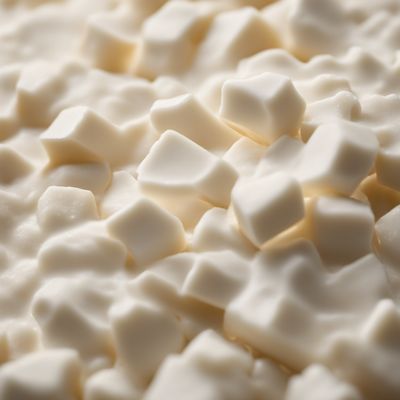
Ingredient
Gelatine
The Versatile Protein: Unveiling the Secrets of Gelatine
Gelatine is a translucent, odorless, and tasteless substance derived from collagen, a protein found in the connective tissues of animals. It is commonly available in powdered or sheet form. When dissolved in liquid and cooled, gelatine forms a gel-like substance that adds a smooth and jiggly texture to foods. It is highly versatile and can be used in both sweet and savory dishes, ranging from desserts like panna cotta and jelly to savory dishes like terrines and mousses. Gelatine is also used as a stabilizer in whipped creams and ice creams, and as a clarifying agent in stocks and broths.
Origins and history
Gelatine has a rich history that dates back to ancient civilizations. The process of extracting gelatine from animal bones and tissues was discovered by the Egyptians around 1350 BC. It was later embraced by the Romans, who used it to create elaborate dishes and as a binding agent in their cuisine. Gelatine gained popularity in Europe during the Renaissance and became widely available in the 19th century with the advent of industrial production methods. Today, gelatine is produced globally and is an essential ingredient in many culinary traditions.
Nutritional information
Gelatine is a good source of protein, containing essential amino acids that support healthy skin, hair, and nails. It is low in calories, with approximately 20 calories per tablespoon. Gelatine also contains small amounts of minerals like calcium, magnesium, and phosphorus.
Allergens
Gelatine is derived from animal sources, primarily from the bones and skin of pigs and cows. Therefore, it may not be suitable for individuals following a vegetarian or vegan diet. Additionally, individuals with specific religious or dietary restrictions may need to ensure that the gelatine they consume is sourced from halal or kosher-certified animals.
How to select
When selecting gelatine, opt for high-quality brands that clearly state the source of the gelatine, such as grass-fed cows or organic pigs. Look for products that are free from additives or preservatives. For powdered gelatine, choose a fine, odorless powder that dissolves easily. For sheet gelatine, select thin, translucent sheets that are pliable and free from discoloration.
Storage recommendations
To maintain the freshness and quality of gelatine, store it in a cool, dry place away from direct sunlight. Once opened, transfer the gelatine to an airtight container to prevent moisture absorption. Properly stored gelatine can last for up to two years.
How to produce
Producing gelatine at home requires specialized equipment and knowledge. It involves simmering animal bones or skin in water for an extended period to extract the collagen. The extracted collagen is then purified, filtered, and dried to obtain gelatine. Due to the complexity of the process, it is more practical for amateur cooks to purchase commercially available gelatine.
Preparation tips
To use gelatine, it must be hydrated and dissolved in a liquid before incorporating it into a recipe. For powdered gelatine, sprinkle it over a small amount of cold liquid and let it bloom for a few minutes. Then, gently heat the mixture until the gelatine dissolves completely. For sheet gelatine, soak the sheets in cold water until they become soft and pliable, then squeeze out any excess water before adding them to a warm liquid to dissolve. It is important to follow the specific instructions provided by the recipe, as the ratio of gelatine to liquid can vary depending on the desired texture.
Substitutions
Agar agar, a plant-based gelatin substitute derived from seaweed, can be used as a vegetarian alternative to gelatine. It has similar gelling properties but may require different ratios and preparation methods. Additionally, pectin can be used as a substitute in certain recipes, although it may result in a slightly different texture.
Culinary uses
Gelatine is widely used in the creation of desserts such as jellies, mousses, and panna cotta. It is also used in the preparation of savory dishes like terrines, aspics, and meat glazes. Gelatine is a key ingredient in the production of gummy candies and marshmallows, providing their characteristic chewy texture. It is also used in the clarification of stocks and broths, as well as in the stabilization of whipped creams and ice creams.
Availability
Gelatine is commonly available in grocery stores, supermarkets, and specialty food stores worldwide.





